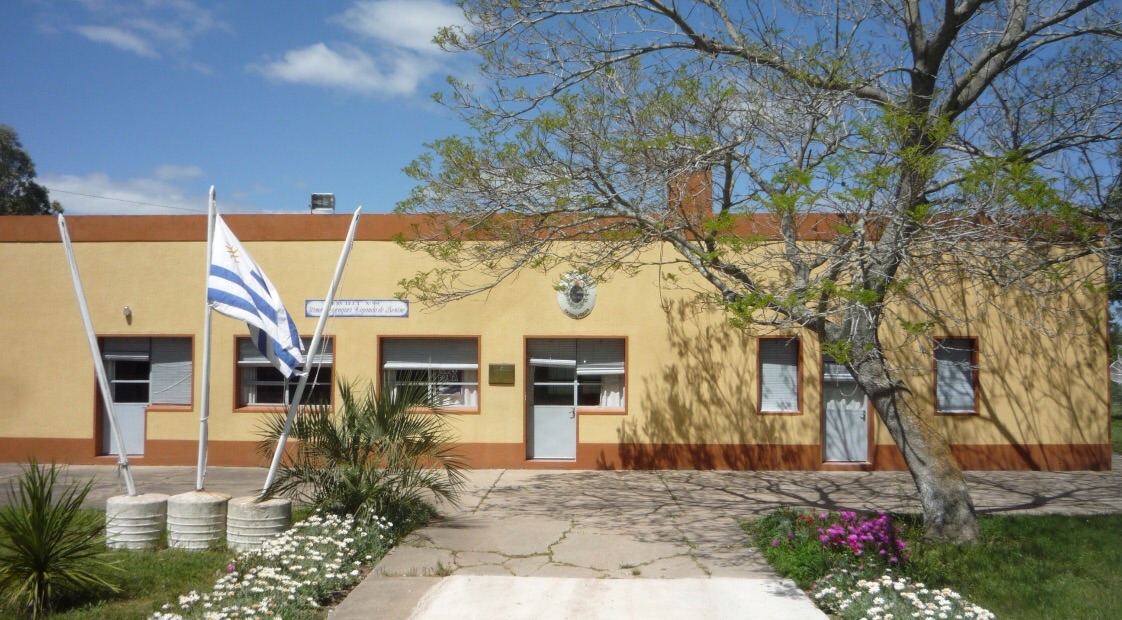The story of Irma Ayçaguer Ciganda has seduced us, not only for how it happened, but also what it led to.
She was born in Uruguay, but all eight of her surnames are Basque, from both sides of the Pyrenees. Her grandparents decided to seek out a new life in Uruguay, leaving behind the Basque Country because, during those hard times in the first half of the 19th century, the consequences of the political changes were still being felt, and a large number of people had to leave to find security and better opportunities, or simply to survive.
Our protagonist’s paternal grandparents left the Northern Basque Country to settle in the newly-founded Eastern Republic of Uruguay, specifically in the department of Durazno. Irma’s parents later moved to what is now known as Carlos Reyles which at the time was just a collection of houses around Molles train station. There, they worked in a shop, seling food and tools in exchange for wool, leather, cattle, and crops.
And that’s where our protagonist was born in 1917. She was the fifth of five siblings, who were orphaned at a very young age and were raised by aunts, uncles, and other relatives. Irma ended up moving in order to take care of an uncle of hers who lived in the Rivera department, on the border with Brazil’s Rio Grande do Sul state; there’s a large Basque presence in this border area.
There, she met the man she would marry, Luis Eduardo Bonino, a Uruguayan with an Italian first surname, but also of Basque origin. The left the northern parts in the 1950s to move to Rocha deparment, on the east coast. This region is characterized by flatlands and plenty of surface water, making it the perfect place to grow rice and livestock, which is what European colonists did. The couple settled down to grow rice on the Corral de Palma ranch, which had been fenced in by the colonists to keep their cattle in.

And it is there where our protagonist, Basque-Uruguayan Irma Ayçaguer Ciganda, proved her profound social sensitivity by building, organizing, and running a school, complete with all government permits, for the children of the workers maintaining those rice plantations. Her goal was to prevent the family destructuring that would mean that the children would have to live far from their parents in towns in order to get their schooling.
What’s more, throughout all those years, until her death in 1983, she made sure to provide books and show films in areas where there was no electricity, using not only the projector, but also a generator for the necessary electricity.

After her death, her children continued her work. That led the Uruguayan Senate to designate Rural School #99 in Rocha Department as the Irma Ayçaguer Ciganda school in 1998.
The history of the Basques and of nations like Uruguay are built on some great histories, but upon many, many more smaller ones. And it’s not that they’re small, per se, it’s just that they aren’t recorded in the history books. But they make up the bread and butter of the spirit of our people. It is they who are largely responsible for the personality and morale of a people.
Since then, the commitment and vision of this Basque-Uruguayan has allowed hundreds of children to grow up and get an education without having to move away from home. That’s no mean feat.
This story was told to us by one of her sons, Pedroso Bonay, who our readers may recognize from his story about the Montevideo Port Market for our #travelingbasques project. He also sent us some photos of the school that is now named after his mother, and the area it’s located in.
We’ll also leave you with the transcript of the reasons the Uruguayan Senate passed Law #17031/1998, designating Rocha Department Rural School #99 as Irma Ayçaguer Ciganda School.
Last Updated on May 9, 2023 by About Basque Country





























